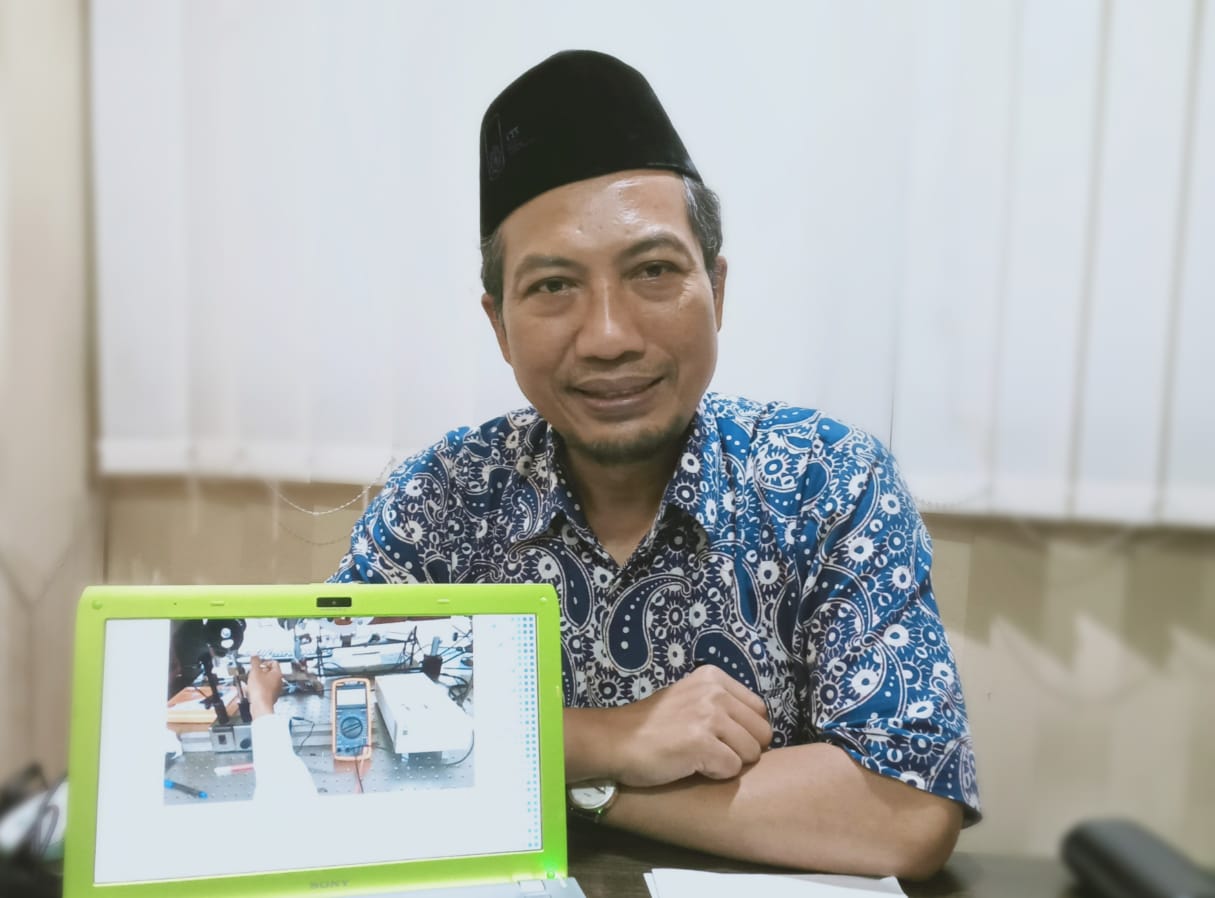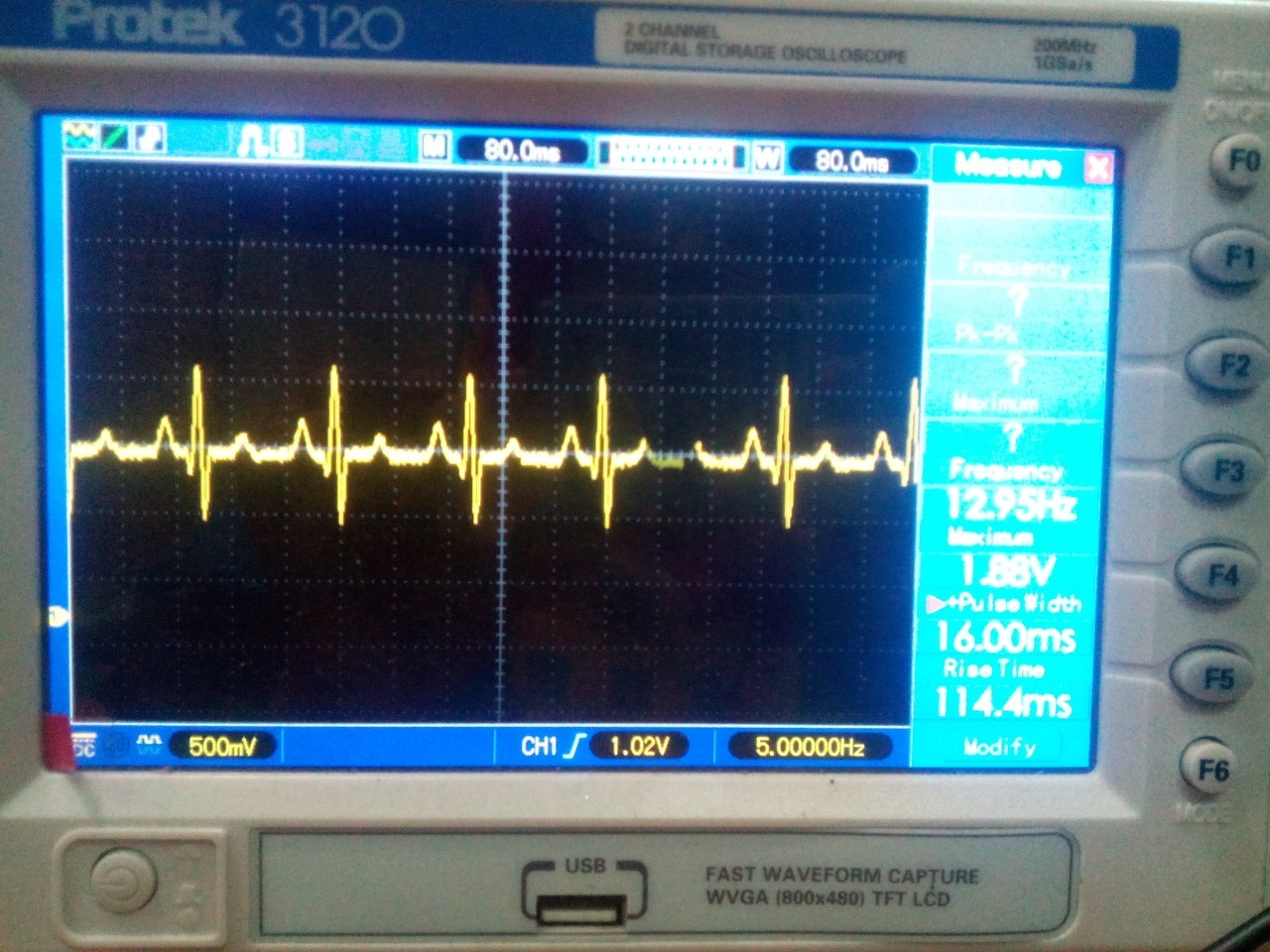ITS Lecturer Develops Optical Sensors as Blood Flow Detector

Prof. Dr. rer. nat. Agus Rubiyanto, M.Eng.Sc., ITS lecturer, when showing a picture of his research on optical sensors as blood flow detector
ITS Campus, ITS News – In supporting the development of more efficient and accurate medical devices, a lecturer of Institut Teknologi Sepuluh Nopember (ITS) developed optical sensors to measure the speed of blood flow. This research carried out by a professor from the ITS Physics Department, Prof. Dr. rer. nat. Agus Rubiyanto, M.Eng.Sc., successfully passed as a postgraduate research program by the Ministry of Research and Technology (Kemenristek).
This professor, who is familiarly called Ruby, informed that the background of his research was the importance of blood flow in monitoring health. Many types of diseases are affected by a person’s blood flow. “Therefore, it is necessary to develop medical devices to support the measurement of blood flow,” he stated.
Ruby admitted that his research aimed to develop self-mixing interferometer sensors as blood flow measuring sensors that can be applied in the world of health. The self-mixing interferometer sensor is an optical sensor that has been widely developed by scientists in numerous research works, and industrial technologies. “I see that this interferometer self-mixing sensor also has the potential to be developed in health technology,” conveyed this man who is the Head of ITS Fundamental Science Research Center.
In addition, Ruby continued that the self-mixing interferometer itself is an optical sensor where the light inside the sensor can interact with each other. Unlike conventional interferometers, the self-mixing interferometer signal can be reflected alone inside the laser cavity. “The modulated wave strength of the self-mixing interferometer can be used to estimate the target speed, which in this study, is the blood flow,” he identified.

Artificial heart rate signals detected by the optical self-mixing interferometer sensors
According to this alumnus of Optoelectronics and Laser Applications, the University of Indonesia, the challenge he faced in developing the research was that the materials needed to complete optical sensors were still not widely found in Indonesia, including the self-mixing interferometer sensors that can only be found in Europe. “In addition, we also need to do Arduino programming to connect sensors with medical concepts regarding blood flow measurement,” he elaborated.
This alumnus of Paderborn University, Germany, also mentioned that to complete the research, it requires maximum time and effort. During the two years of his research, Ruby and several other postgraduate students continue to develop further research to get maximum results later. “This research is indeed not easy, on top of its detailed components, it also requires synchronization with blood flow and the anatomy of the human body,” he clarified.
This lecturer, who was born in Surabaya, added that the blood measuring devices, which use optical sensors will have advantages compared to conventional blood gauges. This optical sensor can measure a patient’s blood flow without touching the patient, so the application will make the patient more comfortable. “In addition, because it makes use of the self-mixing interferometer sensor with a modulated waveform, the measurement results will definitely be more accurate,” emphasized Ruby, former dean of the ITS Faculty of Scientics.
Finally, Ruby hopes that in the future, the self-mixing interferometer-based blood measuring device can support the development of technology in the medical field. In addition, he also said that being a scientist requires patience and perseverance. ”We also learn, that God’s knowledge is very broad and great, therefore we, as God’s creatures, must learn more to be able to get maximum results,” he concluded. (sin/ory/ITS Public Relations)
Related News
-
Faithful in Times of Joy and Sorrow, Married Couple Graduate with Doctorates Together at ITS
ITS Campus, ITS News — As though guided by one heart and one soul, Dr Hanugra Aulia Sidharta ST
February 27, 2020 23:02 -
ITS Wins 2024 Project Implementation Award for Commitment to Gender Implementation
ITS Campus, ITS News —Not only technology-oriented, Institut Teknologi Sepuluh Nopember (ITS) also show its commitment to support gender
February 27, 2020 23:02 -
ITS Professor Researched the Role of Human Integration in Sustainable Architecture
ITS Campus, ITS News –The developing era has an impact on many aspects of life, including in the field
February 27, 2020 23:02 -
ITS Sends Off Group for Joint Homecoming to 64 Destination Areas
ITS Campus, ITS News — Approaching Eid al-Fitr, the Sepuluh Nopember Institute of Technology (ITS) is once again facilitating academics who want
February 27, 2020 23:02
